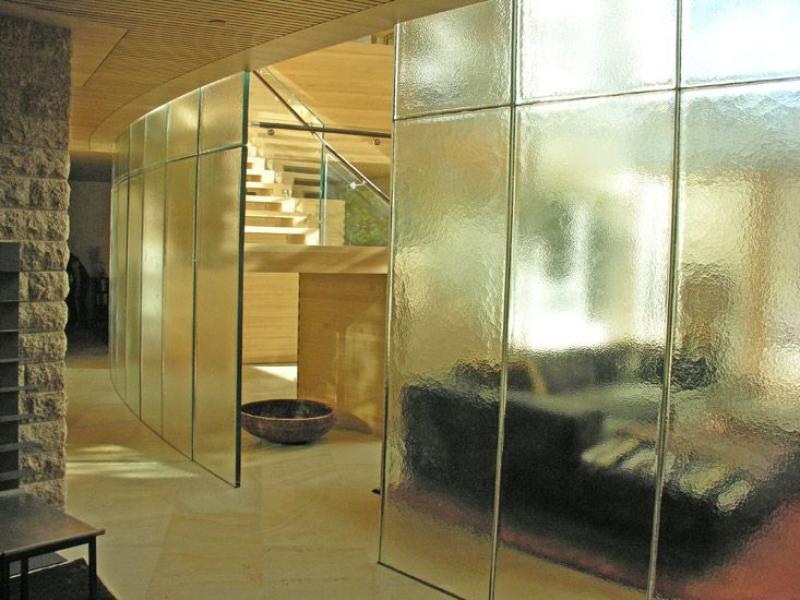Heat treated glass has revolutionized the construction and automotive industries by providing enhanced strength, safety, and versatility. Its unique manufacturing process results in a product that outperforms standard glass in durability and safety standards, making it a preferred choice for architects, designers, and engineers globally. This article delves into the characteristics, manufacturing processes, applications, and market trends surrounding heat treated glass.
The Heat Treatment Process and its Impact on Glass Strength Enhancement
Heat Treated Glass commonly referred to as tempered glass, undergoes a specialized thermal process that significantly increases its strength. Initially, the glass is cut and shaped as required before being heated to an extremely high temperature, typically around 620°C to 700°C. After reaching the required temperature, the glass is rapidly cooled using high-pressure air jets, which creates balanced internal stresses within the material. This treatment compresses the outer surfaces while stretching the interior, giving the glass enhanced mechanical properties.
The result is a glass that is approximately four to five times stronger than standard annealed glass of the same thickness. The internal stress structure also makes the glass more resistant to impact and thermal shock, providing greater safety in case of breakage. When broken, heat treated glass disintegrates into small, blunt granules rather than sharp shards, reducing the risk of injury. This feature makes it critical for applications where human safety is paramount.
Diverse Commercial Applications Driving Demand for Heat Treated Glass Globally
Heat treated glass has an expanding range of applications across various sectors due to its enhanced safety and durability. In the automotive industry, it is extensively used for side and rear windows, sunroofs, and windshield components, contributing to overall vehicle safety and passenger protection. Buildings and construction also rely heavily on this glass, especially for architectural facade elements, glass doors, windows, skylights, and balustrades.
The glass’s properties are particularly desirable in environments prone to extreme weather conditions, as it can withstand sudden temperature changes and impacts better than regular glass. Its use extends to public transport systems, including buses and trains, where passenger safety is essential. Additionally, the furniture industry incorporates heat treated glass for tabletops and protective surfaces in homes and offices, blending aesthetics with functional toughness.
Retail markets also benefit from the use of heat treated glass in display cases and storefronts, helping to resist vandalism and accidental damage while maintaining visual clarity. This versatility has contributed to a steady rise in global demand, supported by innovations in glass manufacturing technologies and growing infrastructural developments worldwide.
Navigating to Comprehensive Industry Trends through Detailed Heat Treated Glass Reports
An in-depth understanding of the current heat treated glass industry requires comprehensive market analysis, covering aspects such as competitive dynamics, production capacities, technological advancements, and emerging applications. Industry reports provide valuable insights into these trends, helping stakeholders stay updated about supply and demand fluctuations, pricing strategies, and regional market breakdowns.
These detailed analyses also highlight regulatory frameworks influencing manufacturing standards and safety certifications across different countries, which are crucial for companies aiming to maintain compliance and competitive advantage. Businesses seeking to explore investment opportunities or expansion strategies can access these reports for data-driven decision-making, identifying key growth drivers such as urbanization, increased construction activities, and rise in automotive production.
Moreover, such research material enables manufacturers and suppliers to benchmark their performance against industry peers, track technological innovations, and anticipate potential challenges posed by raw material price volatility or environmental regulations. Navigating through these reports offers a strategic perspective on the future outlook of the heat treated glass market globally.
Commercial Benefits and Transactional Opportunities within the Heat Treated Glass Market
From a commercial standpoint, heat treated glass presents lucrative business opportunities across various supply chains, including raw material suppliers, glass processors, distributors, and end-users. Its growing adoption is driven by stringent safety requirements and an increased focus on durable, energy-efficient materials in construction and transportation.
For manufacturers, engaging in the production of heat treated glass can yield higher profit margins compared to regular glass products, owing to its specialized processing and value-added features. Buyers and contractors involved in building projects increasingly prioritize sourcing heat treated glass to comply with international safety standards and improve the longevity of installations.
Furthermore, the availability of customized heat treated glass solutions, such as laminated or coated variants, incentivizes contracts for premium projects involving commercial complexes, airports, and smart homes. Transactional activities often include bulk orders for large-scale developments or automotive assembly lines, underscoring the need for streamlined supply chains and reliable logistics.
With the market rapidly expanding, partnerships between glass producers and distributors are becoming more critical. Monitoring purchasing trends and customer preferences helps drive innovations in product features, facilitating entry into emerging regional markets and niche application segments.
Get this Report in Japanese Language: 熱処理ガラス市場
Get this Report in Korean Language: 열처리 유리 시장
About Author:
Money Singh is a seasoned content writer with over four years of experience in the market research sector. Her expertise spans various industries, including food and beverages, biotechnology, chemical and materials, defense and aerospace, consumer goods, etc. (https://www.linkedin.com/in/money-singh-590844163)
